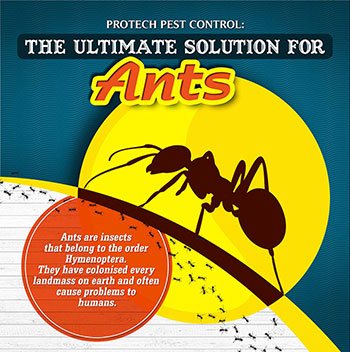Rodent-Proofing Your Attic: Important Tips For Homeowners
Rodent-Proofing Your Attic: Important Tips For Homeowners
Blog Article
Developed By-Jenkins Degn
Picture your attic room as a comfortable Airbnb for rodents, with insulation as fluffy as resort cushions and circuitry much more enticing than room service. Now, think of these unwanted visitors tossing a wild party in your home while you're away. As a house owner, guaranteeing your attic room is rodent-proof is not nearly comfort; it has to do with protecting your property and enjoyed ones. So, what basic steps can you take to guard your refuge from these furry trespassers?
Evaluate for Entrance Details
To start rodent-proofing your attic, evaluate for entrance factors. Start by carefully checking out the outside of your home, seeking any openings that rodents could utilize to get to your attic. Check for royal pest control around utility lines, vents, and pipelines, along with any fractures or openings in the foundation or siding. Make certain to pay very close attention to locations where different building materials fulfill, as these prevail entrance points for rats.
In addition, check the roof covering for any damaged or missing out on tiles, along with any kind of gaps around the sides where rats can squeeze through. Inside the attic room, look for indicators of existing rodent task such as droppings, chewed cables, or nesting materials. Utilize a flashlight to completely check dark corners and hidden spaces.
Seal Cracks and Gaps
Check your attic room extensively for any kind of splits and voids that require to be secured to avoid rats from getting in. pest control company for sale can press via even the smallest openings, so it's essential to secure any prospective entry points. Inspect around pipes, vents, cords, and where the wall surfaces meet the roofing system. Make pest control mice near me of a combination of steel woollen and caulking to seal off these openings efficiently. Steel woollen is an excellent deterrent as rodents can not chew with it. Make certain that all gaps are snugly secured to deny access to undesirable bugs.
Do not ignore the significance of sealing voids around doors and windows as well. Use climate stripping or door moves to secure these locations properly. Check the areas where energy lines enter the attic room and seal them off using a suitable sealer. By putting in the time to secure all cracks and spaces in your attic, you produce an obstacle that rodents will certainly locate hard to breach. Prevention is type in rodent-proofing your attic, so be detailed in your initiatives to seal any kind of possible access factors.
Remove Food Resources
Take positive steps to get rid of or store all prospective food resources in your attic to deter rodents from infesting the space. Rats are brought in to food, so removing their food sources is vital in keeping them out of your attic room.
Right here's what you can do:
1. ** Store food firmly **: Avoid leaving any type of food items in the attic room. Shop all food in impermeable containers made of steel or durable plastic to avoid rats from accessing them.
2. ** Clean up particles **: Eliminate any kind of stacks of debris, such as old newspapers, cardboard boxes, or wood scraps, that rodents can utilize as nesting product or food resources. Keep the attic clutter-free to make it much less appealing to rats.
3. ** Dispose of garbage properly **: If you use your attic for storage space and have rubbish or waste up there, make sure to take care of it consistently and correctly. Rotting garbage can bring in rats, so maintain the attic clean and without any natural waste.
Conclusion
Finally, bear in mind that an ounce of avoidance deserves a pound of remedy when it comes to rodent-proofing your attic room.
By making the effort to check for entrance points, seal splits and spaces, and get rid of food resources, you can maintain unwanted bugs at bay.
Bear in mind, 'An ounce of avoidance is worth an extra pound of remedy' - Benjamin Franklin.
Remain proactive and safeguard your home from rodent infestations.
